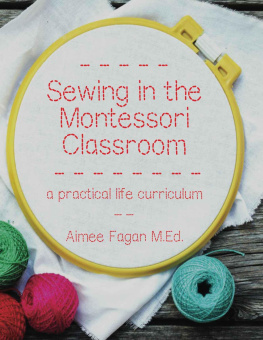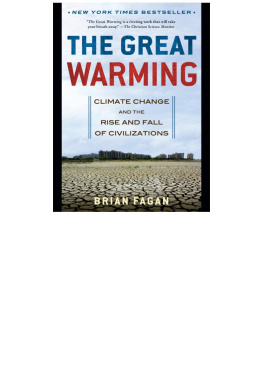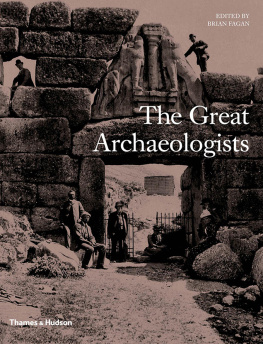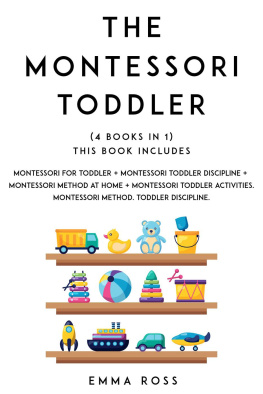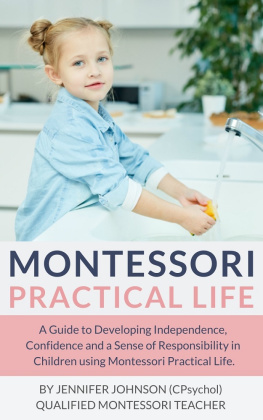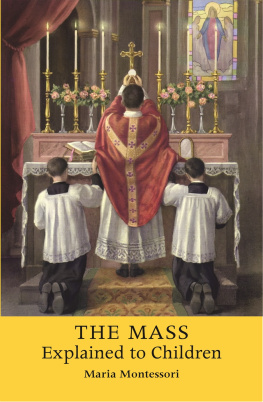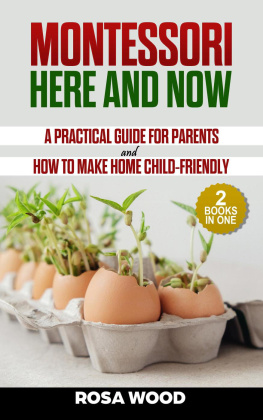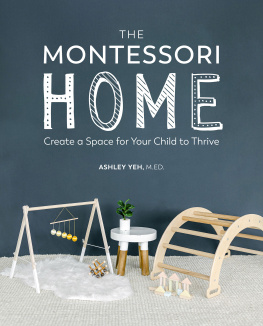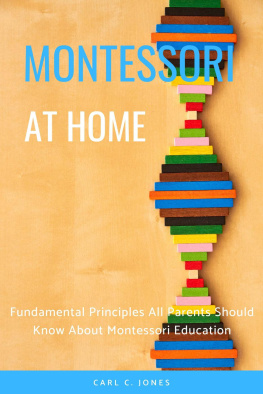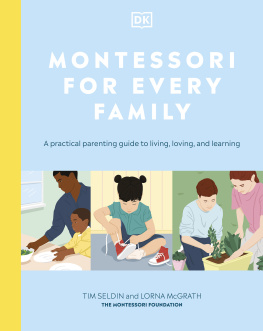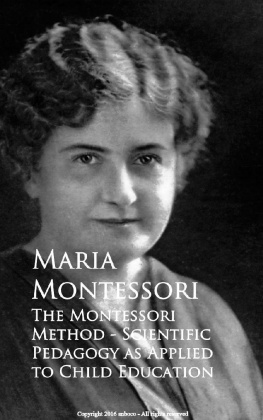Copyright 2015 by Aimee Fagan.
All rights reserved. No part of this publication may be reproduced, distributed, or transmitted in any form or by any means, including photocopying, recording, or other electronic or mechanical methods, without the prior written permission of the publisher, except in the case of brief quotations embodied in critical reviews and certain other noncommercial uses permitted by copyright law. For permission requests, write to the publisher, addressed Attention: Permissions Coordinator, at the address below.
Aimee Fagan
University Montessori School
1034 Reservoir Rd.
Charlottesville, VA 22903
www.montessoriworksblog.com
aimeefagan@gmail.com
Book Layout 2013 BookDesignTemplates.com
Ordering Information:
Quantity sales. Special discounts are available on quantity purchases by corporations, associations, and others. For details, contact the Special Sales Department at the address above.
Sewing in the Montessori Classroom, Aimee Fagan. 1st ed.
ISBN 978-0692393925
Table of Contents
Sewing in the Montessori Classroom
Preparing the Environment
Preliminary Lessons
Early Sewing Lessons
Intermediate Sewing Lessons
Advanced Sewing Lessons
Sewing Projects
Bibliography
For Maddy and Imogen, the two girls that mean the most to me.
Chapter one
Sewing in the Montessori Class room
Meaningful Work
The basis of a well-functioning and normalized Montessori class is found in practical life, and a strong practical life curriculum is rooted in meaningful real work.
If a child does not set a table for a group of people who are really going to eat, if he does not have real brushes for cleaning, and real carpets to sweep whenever they are used, if he does not himself have to wash and dry dishes and glasses he will never attain any real ability.
With these words in my mind, I looked at the practical life activities that I had available in my class. I found that many of the lessons and materials I was offering were lacking. They were not real, meaningful, and truly practical. I knew that I wanted activities that were culturally and socially relevant and appealing in my classroom, but what could those lessons be? Polishing is great, but how many children really see their parents polishing the silver place settings? Spooning, tonging, pouring, and the like are quickly mastered when the lessons remain isolated on the tray rather than incorporated into the classrooms daily functioning. What materials could we use that would both appeal to the three-year-old and stay as appealing and engaging until that child was six? For me, the answer was sewing.
This curriculum is for all children, girls and boys, ages two and a half to past six. Over my years of sewing with children, I have seen boys enjoy stitching and knitting with as much, and at times even more, enthusiasm than girls. Throughout this book I will constantly refer to the child and I will interchange she and he, but know that all of these activities are not only appropriate for both girls and boys, but also interesting, creative, and engaging.
Coordination, Concentration, Independence, and Order
Meaningful and real work ties directly into the main goals of the Montessori practical life curriculum: coordination, concentration, independence, and creating a sense of order. These aims are the underlying framework of the Montessori pedagogy. Without developing and strengthening these foundational qualities, the child will not be successful with the bank game, the moveable alphabet, etc. Essentially, the child will not be able to access and engage completely with the Montessori environment.
The childs coordination develops and is refined through the actual process of the work, whether it is cutting Play-Doh with scissors or cross-stitching Xs on gingham, the child is practicing new ways of using her hands. All of the lessons in this book are sequential, moving from simple, unstructured sewing to complicated finger knitting. The lessons progress so that the child is constantly challenging and building on her coordination, fine motor skills, and motor planning. As she moves through the curriculum, these skills are cultivated, and this transfers to her work across the classroom.
In the Montessori environment, purposeful and meaningful work more often produces deeper concentration and engagement than lessons that are just done for the sake of novelty. This deeper focus and attention helps the child along the path to normalization, meaning that the child independently choose work that satisfies her, shows engaged concentration while working, and is a functioning social member of the class. When the child is making something real, it draws her deeper into the work and the processes involved. It is exciting for her to think of and create her own projects, even if they are as simple as picking beads for necklaces. These lessons make that connection for the child. They give her the opportunity to plan and create, and therefore focus and concentrate. We observe this consistently in our class: Sewing work produces some of the most focused and engaged work in the area of practical life across the age spans.
These sewing lessons are isolated to help the child be both independent and successful. We want her to be able to tie a knot before she can sew a pillow and allow her the independence to decide how long she wants her necklace to be and what color embroidery floss to use.
How does he achieve this independence? He does it by means of a continuous activity. How does he become free? By means of constant effort.... we know that development results from activity. The environment must be rich in motives which lend interest to activity and invite the child to conduct his own experiences.
We want the child to be successful, and to help that happen we scaffold tasks that may be a little beyond her current independent working level. If she cant quite tie the knot correctly, we want her to know how to ask for help, either from a teacher or a friend. But to see the joy in a childs eyes when she has finished a project of her own design and undertaking, that is the moment that takes your breath away. It is through this scaffolding and the building of independence that the child becomes self-sufficient in the practical life area. The confidence gained from making these choices and being given the independence to follow through with the choice expands and permeates the childs whole being.
The sense of order in the Montessori class is often defined as knowing how to start a work, do the work, and clean up the work. But it is all the little details between those steps that really challenge and push and ultimately reinforce and build a strong, well-developed sense of order. It is knowing how to organize your thoughts and choose a work, then plan and arrange your materials based upon those ideas, how to start a work, what to do next, and the countless steps that come between the start and the end of the actual lesson. Finally, it is also how to respect the materials and the classroom and making sure that the material is returned to the right place and is ready for the next child. In accordance with Montessori theory and pedagogy, all of these sewing lessons involve planning, thinking, choices, and the organization of ideas, materials, and movements.
Independence is developed as the child moves through the curriculum and masters the steps. The sense of order is reinforced through the lessons, the coordination is developed through the actual work, and the concentration lengthens and grows as a result of the work. It is this deep and connected practical life curriculum that helps the development of the peaceful, fulfilled, and normalized child.

